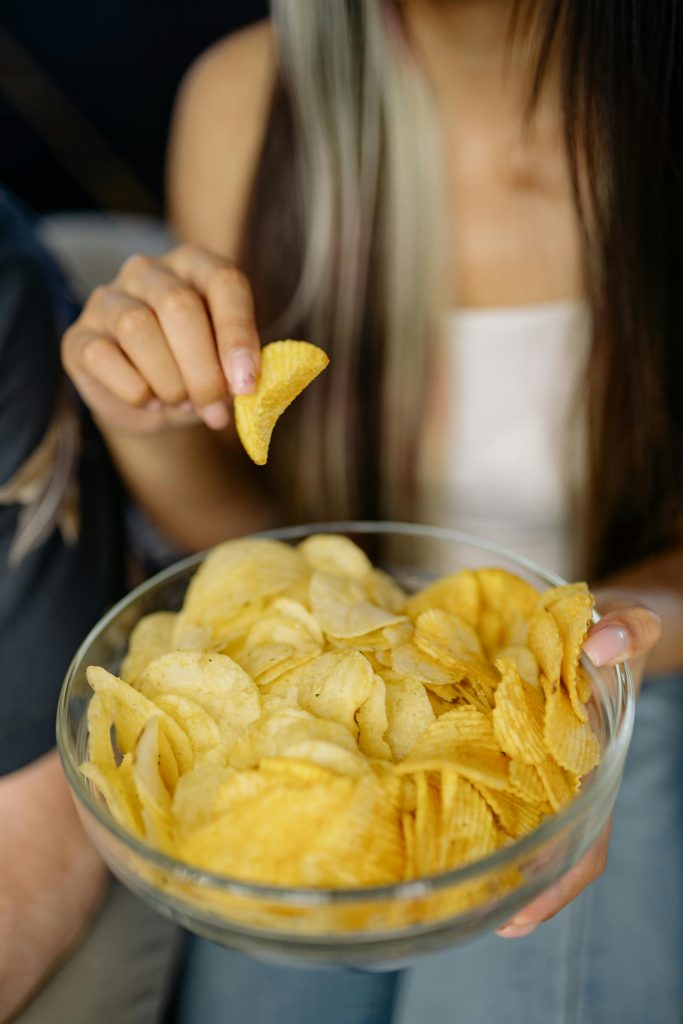Ultra-processed foods (UPFs) have been a hot topic in health circles lately, and they’re not just another diet trend.
From crisps to fizzy drinks, mass-produced bread, and even some flavoured yoghurts, many of us are consuming these foods regularly without realising the potential impact on our health. But just how bad are they?
What exactly are ultra-processed foods?
Ultra-processed foods are those that go through multiple industrial processes, containing ingredients that don’t normally appear in a home kitchen. They include things like emulsifiers, preservatives, artificial flavourings, and colourings, which are used to improve taste and extend shelf life. Essentially, if it’s something you couldn’t whip up at home with ingredients from your pantry, it’s likely ultra-processed. Think of items like instant noodles, sugary cereals, and pre-packaged snacks.
The NOVA Food Classification System helps us make sense of these foods by categorising them into different levels of processing. From non-processed (like fruits, veggies, and eggs) to processed (like bacon and canned goods) to ultra-processed foods like sweets, biscuits, and soft drinks, UPFs sit at the far end of the spectrum.
Are ultra-processed foods that bad for you?
The short answer? It depends on how much of your diet consists of UPFs. According to dietitians, diets heavy in ultra-processed foods have been linked to increased risks of chronic conditions like heart disease, diabetes, and obesity. Research has shown that eating these foods could also mess with hunger hormones, leaving you feeling constantly hungry and triggering cravings in a similar way to addictive substances like alcohol and nicotine.
But before you panic and start throwing out every snack in your pantry, remember that moderation is key. If 80% of your diet consists of whole, minimally processed foods—like veggies, lean meats, and grains—then having UPFs occasionally won’t wreck your health. The key is balance, and experts agree that an 80/20 approach works well for most people.

How do you spot ultra-processed foods?
Some UPFs are easy to identify—think of anything in a shiny package with a long list of unpronounceable ingredients. But others might surprise you, such as certain cereal bars or even some seemingly healthy options like flavoured yoghurts.
Can you eat UPFs in moderation?
Absolutely! Some nutritionists and dieticians advise that you don’t have to eliminate ultra-processed foods completely. It’s all about moderation. Fish fingers, for example, might not be as ‘pure’ as freshly grilled fish, but they still provide essential nutrients. The same applies to other UPFs that can fill gaps in your diet when fresh options aren’t available.
If you’re looking to cut back, focus on cooking more meals at home, choosing whole foods like fruits, veggies, and legumes, and making small swaps like opting for plain Greek yoghurt over the flavoured variety.
ALSO SEE: Long-life milk vs fresh milk: Which is better and what is the difference?
Long-life milk vs fresh milk: Which is better and what is the difference?
Written by Jade McGee for Woman&Home.
Feature image: Pexels

